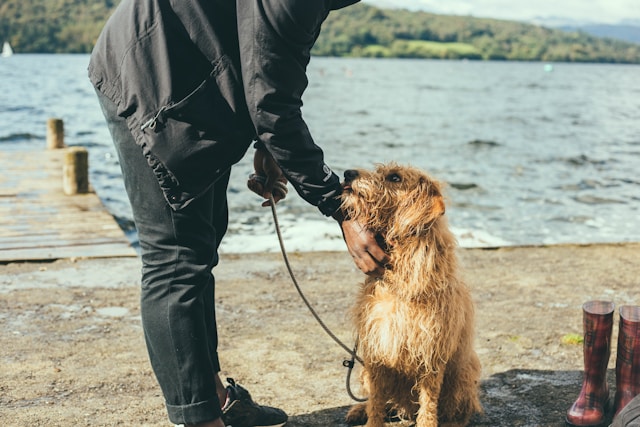
Leash Etiquette: A Guide to Mindful Dog Walking
Walking your dog is more than just a routine—it’s an opportunity to promote their physical well-being and build positive connections within your community. Ensuring that these walks are enjoyable and safe for everyone requires practicing proper leash etiquette. This means following local laws, being considerate of others, and training your dog to walk politely on a leash.
By understanding and adhering to leash etiquette, dog owners can create a more harmonious environment where both pets and people coexist comfortably. Proper leash training benefits not only the owner and their furry companion but also ensures that others in the community feel safe and respected. In this guide, we’ll cover the essential aspects of leash etiquette, from legal requirements to training techniques and respectful interactions.
Understanding Local Leash Laws
Leash laws vary from one area to another, making it essential for dog owners to familiarize themselves with their local regulations. Some places require dogs to be on a leash at all times in public, while others offer designated off-leash zones. These laws are designed to prevent accidents, protect both dogs and people, and maintain public order.
Following leash laws goes beyond legal compliance—it’s a sign of responsible pet ownership. Keeping your dog on a leash helps prevent conflicts with other animals, ensures your pet doesn’t run into traffic, and minimizes the risk of losing your dog.
Failure to comply with leash laws can lead to fines, legal consequences, or even impoundment of your dog. By staying informed and respectful of these regulations, dog owners can contribute to a safer and more pleasant community for everyone.
Choosing the Right Leash and Harness
Selecting the appropriate leash and harness is key to maintaining control and ensuring your dog’s comfort. With so many options available, finding the right fit may seem overwhelming, but understanding their functions can help:
- Standard leashes offer reliable control, making them ideal for busy areas.
- Retractable leashes provide more freedom but can be harder to manage in crowded spaces.
- Adjustable leashes allow flexibility in different environments.
Harnesses also come in different styles, including back-clip, front-clip, and dual-clip options. A front-clip harness is particularly useful for dogs that pull, offering better control during walks.
Regardless of the type chosen, it’s essential that the leash and harness fit properly to prevent discomfort or escape. Seeking professional advice or consulting your veterinarian can help ensure you select the best option for your dog’s breed, size, and temperament.
Training Your Dog for Leash Walking
A well-trained dog makes walks more enjoyable for everyone. Teaching your dog proper leash behavior takes patience, consistency, and positive reinforcement. Here’s how you can train your dog to walk politely on a leash:
- Start training in a low-distraction environment and gradually introduce more challenges.
- Use treats, praise, and toys to reward calm and focused walking.
- Keep the leash short but not too tight, allowing gentle guidance.
- Use verbal cues or clickers to reinforce good behavior.
If your dog pulls, lunges, or gets distracted easily, redirect their attention and remain calm. Professional obedience classes or working with a trainer can also help address persistent leash-related issues.
Respectful Interactions
Being mindful of others while walking your dog is a cornerstone of leash etiquette. Not everyone is comfortable around dogs, and some may have allergies or phobias. Similarly, other dogs may not be well-socialized or may react aggressively.
To promote positive interactions:
- Keep a respectful distance from others unless invited to approach.
- Always ask permission before allowing your dog to greet another dog or person.
- Observe body language—both yours and the other party’s—to gauge comfort levels.
- Pick up after your dog and dispose of waste properly to maintain clean public spaces.
Encounters with other dogs and people are inevitable during walks. Recognizing signs of discomfort, such as stiff posture or avoidance, can help prevent negative interactions. If in doubt, keeping your dog on a short leash and moving away from potential stressors is always a good practice.
By following these leash etiquette principles, dog owners can foster a more respectful and enjoyable environment for everyone. Practicing responsible pet ownership not only benefits your dog but also strengthens the sense of community, making every walk a positive experience.
